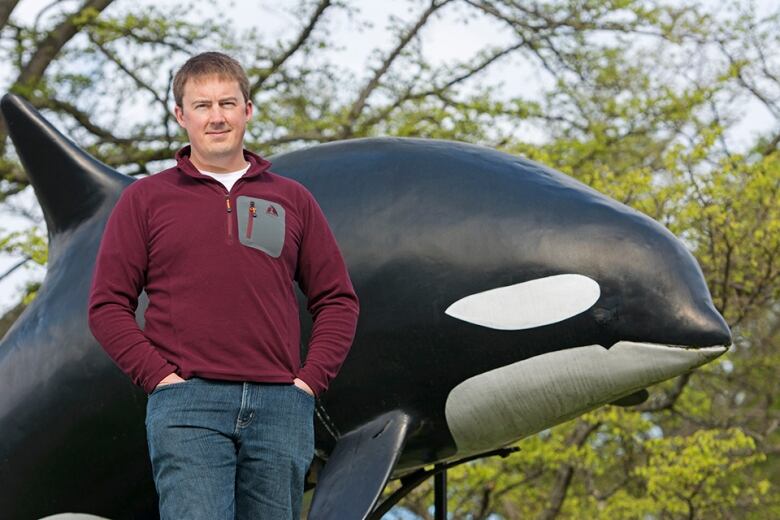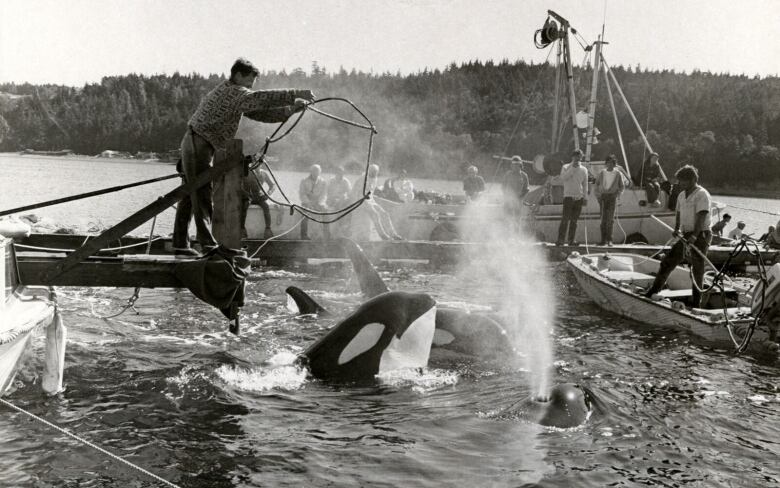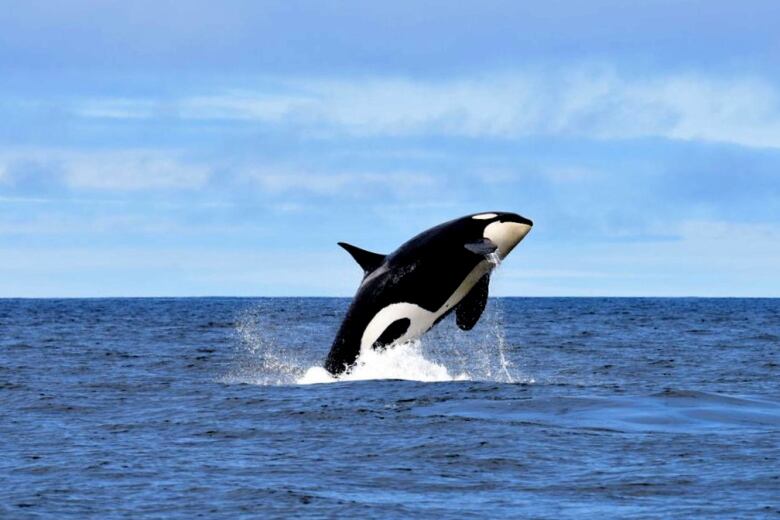How the orca became a poster child for protesters in Canada
Killer whales have not always been beloved by the public

Trans Mountain pipeline protests often feature posters, props and signs with images of whales. For many, they represent what the country stands to lose in the Salish Sea.
The risks of increased tanker noise and oil spills from tankers and at Trans Mountain pipeline sites pose athreat to killer whales and a principal food source, chinook salmon, said Jason Colby, an environmental history professor at the University of Victoria and author of Orca: How We Came to Know and Love the Ocean's Greatest Predator.
Colby says orcashave become political poster children in B.C. because perceptions of the predator have changed significantly over the past six decades.
"Sixtyyears ago it would have shocked a resident of southern B.C. or western Washington to see how much people have embraced orcas," Colby told Stephen Quinn, host of The Early Edition.

Public perception shift
Before they were officially listed as endangered,orcas were feared by the public. They wereconsidered a vermin species that posed a threat to people throughout much of the 20thcentury.
Eventually, public perception of the whales shifted dueto aseries of "really extraordinary rich"encounters between people andorcas both wild and captive in Vancouver, Seattle and Victoria, says Colby.
"It was at those moments when the first live captures and display of killerwhales took place that the public as well as scientists started to think about orcas not just as indistinguishable black and white predators with scary-looking teeth ... but actually as individuals with their own personalities, their own connections to other whales and even potentially to us," Colby said.
Scientists beganto study live orcas for the first time, as opposed to hunting,shooting and then dissecting them.
Research has revealed that in the past 20 years, the population of southern resident killer whales, which frequent the Salish Sea, has declined from nearly 100 to about 75, Colby says. Drone footage has shown southern residents looking emaciated.
Colby says this is most likely due toa lack of food the southern residents eat chinook almost exclusivelyand water toxicity.
"There's a pretty clear scientific consensus on both sides of the border that this is a population slipping toward extinction pretty quickly," Colby said.

Orcas have also taken centre stage in political discourse in Canada because environmental values are changing and public awareness is growing, Colby says.
"It's not surprising to me at all thata pipeline thatis located within the watershed [and]the estuary of where the last really reliable food source for this population isshould be getting attention," Colby said, referring to the Fraser River.
The National Energy Board renewed itsapproval of the Trans Mountain pipeline expansion in February, despite confirmingin itsreconsiderationreportthat anincrease in marine vessels associated with the project would further contribute to effects that have already jeopardized the recovery of the southern resident killer whales.

Colby added that the struggling southern resident killer whales arenot strictly a Canadian issue,as the population also moves in U.S. waters. He cites U.S. federal and state legislation passed recently to protect the southern residents.
"It certainly goes beyond even just the weighing of Canadian environmental versus economic issues," he said.
'We are making investments'
Federal Fisheries Minister Jonathan Wilkinson says the government's goal is to mitigate sea vessel noise, regardless of whether the pipeline is built. He says Ottawa is looking beyond simply requiring vessels to slow down looking, for instance, at how to incorporate quiet vessel technology.
"We are making investments to try to move that technology forward to ensure thatwhenever there's a new ship that may come into the Port of Vancouver, irrespective of whether it's carrying grain or cars or anything else, that we have in place a plan to ensure that the noise levels are such that the whales can thrive.
Listen to the full interview here:
Killers: J pod on the brinkis a CBC British Columbia original podcast about the southern resident killer whales, hosted by Gloria Macarenko. You can get it now for free atCBC Podcasts.
With files from The Early Edition












_(720p).jpg)


 OFFICIAL HD MUSIC VIDEO.jpg)
.jpg)



























































































